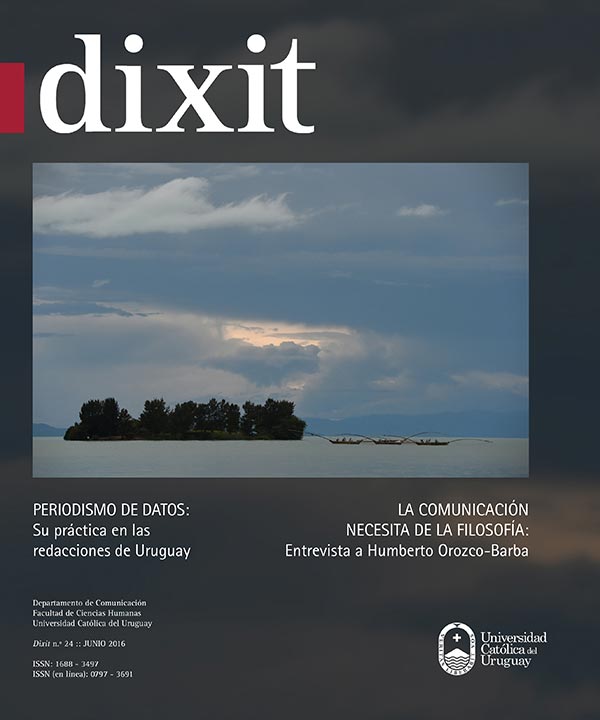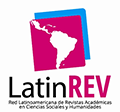Landscapes of Culture: Gastronomy and Culinary Heritage
DOI:
https://doi.org/10.22235/d.v0i24.1166Keywords:
art, cultural communication, local development, tourist experience, gastronomy, culinary heritageAbstract
Culinary heritage is an element of cultural communication, which channels cultural traditions and natural idiosyncrasies of a place. Cuisine and gastronomy purport a close relationship between rural life and service industries. Thus,gastronomy implies local and touristic development. This article explores the relationships between these different concepts while illustrating with examples of how food heritages are critical for the creation of different type of landscapes.
Downloads
References
Adema, P. (2006). Festive Foodscapes: Iconizing Food and the Shaping of Identity and Place. Austin: The University of Texas.
Antrop, M. (2005). Why landscapes of the past are important for the future? Landscape and Urban Planning, 70, 21-34.
Aparicio, D. G. (2014, abril 7). Un viaje por las cuatro cocinas consideradas patrimonio inmaterial de la humanidad. 20 Minutos. Recuperado de http://www.20minutos.es/noticia/2102700/0/gastronomia/patrimonio-inmaterial-de-la-humanidad/dieta-mediterranea
Berno, T., Laurin, U., Maltezakis, G. (2014). The special role of agriculture in food tourism. Wolf, E., Lange-Faria, W. (Eds.). Have fork will travel: Handbook for food tourism (p. 105-114). Portland: World Food Travel Association.
Camarero Izquierdo, C., Garrido Samaniego, M. J. (2004). Marketing del patrimonio cultural. Madrid: Ediciones Pirámide.
Fernández Armesto, F. (2004). Historia de la comida: alimentos, cocina y civilización. Barcelona: Tusquets.
Ferrero, S. (2002). Comida sin par: Consumption of Mexican Food in Los Angeles: Foodscapes in a Transnational Consumer Society. Belasco, W., Scranton, P. (Eds.). Food nations: Selling taste in consumer societies (p. 194- 219). Nueva York: Routledge.
Fusté Forné, F. (2015a). El turisme gastronòmic: autenticitat i desenvolupament local en zones rurals. Documents d’Anàlisi Geogràfica, 61 (2), 289-304.
Fusté Forné, F. (2015b). Gastronomía y turismo: el combate «local frente a global». GeocritiQ, 158.
Fusté Forné, F. (2015c). Internacionalització de les destinacions rurals i de muntanya: idees per a la Vall de Boí del turisme gastronòmic de la regió de Canterbury (Nova Zelanda). Revista Iberoamericana de Turismo-RITUR, 5 (2), 3-26.
Fusté Forné, F. (2016). Tasting cheesescapes in Canterbury (New Zealand). New Zealand Geographer, 72 (1), 41-50.
Hall, C. M., Sharples, L. (2003). The consumption of experiences or the experience of consumption? An introduction to the tourism of taste. Hall, C.M., Sharples, L., Mitchell, R., Macionis, N., Cambourne, B. (Eds.). Food tourism around the world: Development, management and markets (pp. 1-24). Oxford: Elsevier.
Hjalager, A. M., Johansen, P.H., Rasmussen, B. (2015). Informing regional food innovation through lead user experiments. British Food Journal, 117 (11), 2706-2723.
Hobsbawm, E., Ranger, T. (1983). The Invention of Tradition. Cambridge: University Press.
Lin, L., Mao., P.C. (2015). Food for memories and culture – A content analysis study of food specialties and souvenirs. Journal of Hospitality and Tourism Management, 22, 19-29.
Martín-Barbero, J. (1987). De los medios a las mediaciones. Comunicación, cultura y hegemonía. México: Gustavo Gili.
Newman, L. L., Burnett, K. (2013). Street food and vibrant urban spaces: lessons from Portland, Oregon. Local Environment, 18 (2), 233-248.
Nunes do Santos, C. (2007). Somos lo que comemos: identidad cultural y hábitos alimenticios. Estudios y perspectivas en turismo, 16 (2), 234-242.
Patronat de Turisme Costa Brava Girona (2016, abril 30). Productes. Recuperado de http://ca.costabrava.org/que-fer/gastronomia/productes
Pujol, A. (2016, febrero 26). The Philosophy of Food (Ponencia en Máster en Turismo Cultural). Girona: Universitat de Girona.
Real Academia Española. (2014). Cultura. Diccionario de la lengua
española. Recuperado de http://dle.rae.es/?id=BetrEjX
Sanjuán Ballano, B. (2007). Información=Cultura. Mapas patrimoniales para ir de los medios a las mediaciones. PH Cuadernos - Patrimonio Cultural y Medios de Comunicación, 21, 30-43.
Santamaría, S. (2002). La cocina de Santi Santamaría: La ética del gusto. Barcelona: Everest.
Solomon, H. (2015). The Taste No Chef Can Give: Processing Street Food in Mumbai. Cultural Anthropology, 30 (1), 65-90.
Smith, S. (2015). A sense of place: Place, culture and tourism. Tourism Recreation Research, 40 (2), 220-233.
Telfer, D. J., Wall, G. (1996). Linkages between Tourism and Food production. Annals of Tourism Research, 23 (3), 635-653.
Tellström, R., Gustafsson, I., Mossberg, L. (2006). Consuming heritage: The use of local food culture in branding. Place Branding, 2 (1), 130-143.
UNESCO. (s. f.). ¿Qué es el patrimonio cultural inmaterial? Recuperado de http://www.unesco.org/culture/ich/es/que-es-el-patrimonio-inmaterial-00003
Downloads
Published
How to Cite
Issue
Section
License
From issue number 32 onwards all contents are licensed under the Creative Commons Attribution 4.0 International License (CC BY 4.0).
Issues number 29-31 are licensed under the Creative Commons Attribution-NonCommercial 4.0 International License.
The contents corresponding to number 28 and earlier editions are under the Creative Commons Attribution-NonCommercial-ShareAlike 4.0 International License.


















